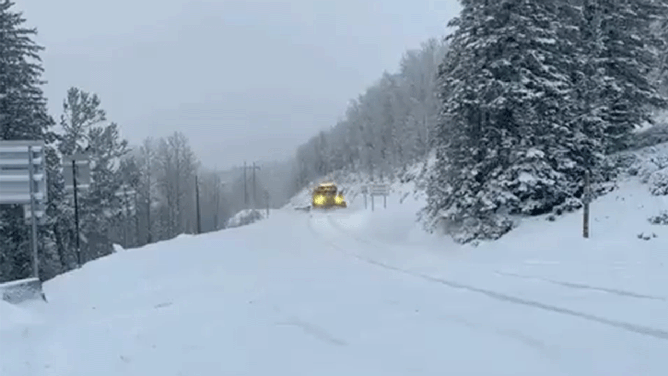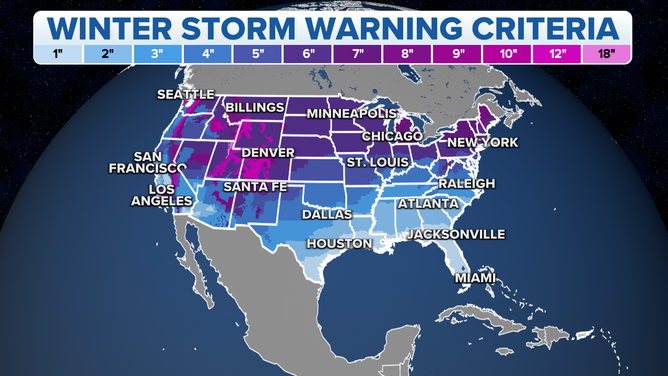Winter Storm Warning criteria for US revamped by National Weather Service
Previously, the criteria used for issuing those watches and warnings were established by each of the 122 NWS offices for their respective jurisdictions.
Winter Storm Warning criteria for US revamped by National Weather Service
The National Weather Service has revamped the criteria for Winter Storm Warnings across the country, releasing a new map to serve as the basis for issuing winter storm watches and warnings across the U.S.
The National Weather Service has revamped the criteria for Winter Storm Warnings across the country, releasing a new map to serve as the basis for issuing winter storm watches and warnings across the U.S.
The criteria for watches and warnings abide by thresholds of snowfall amounts. This means that a certain amount of snow would have to be forecast to fall in an area before a Winter Storm Watch or Warning is issued.

Utah Department of Transportation snowplows work to clear fresh snow on Memorial Day in the upper canyons.
(Utah DOT / FOX Weather)
Previously, the criteria used for issuing those watches and warnings were established by each of the 122 NWS offices for their respective jurisdictions. Those jurisdictions typically cover between 10 and 20 counties, according to NOAA, which oversees the NWS. They noted that some counties are split between offices, based on geographical features.
WATCH VS. WARNING: HERE ARE THE DIFFERENCES BETWEEN WEATHER TERMS THAT COULD SAVE YOUR LIFE
Under the new criteria, all local NWS offices will follow thresholds assigned to them by the main NWS office. Those thresholds can be seen in the new "Winter Storm Warning Criteria" map.

New Winter Storm Warning Criteria.
(FOX Forecast Center / NWS / FOX Weather)
Each area is color-coded with an assigned snowfall threshold based on county or geography.
For example, the color for Knox County in East Tennessee denotes that the amount of snow that would need to fall for a Winter Storm Warning is 3 inches, whereas the color for the often-snowy Wasatch Mountains in northern Utah indicates the threshold is much higher at 18 inches.
To find the Winter Storm Warning Criteria for your area, check out the interactive map on the NWS website.
